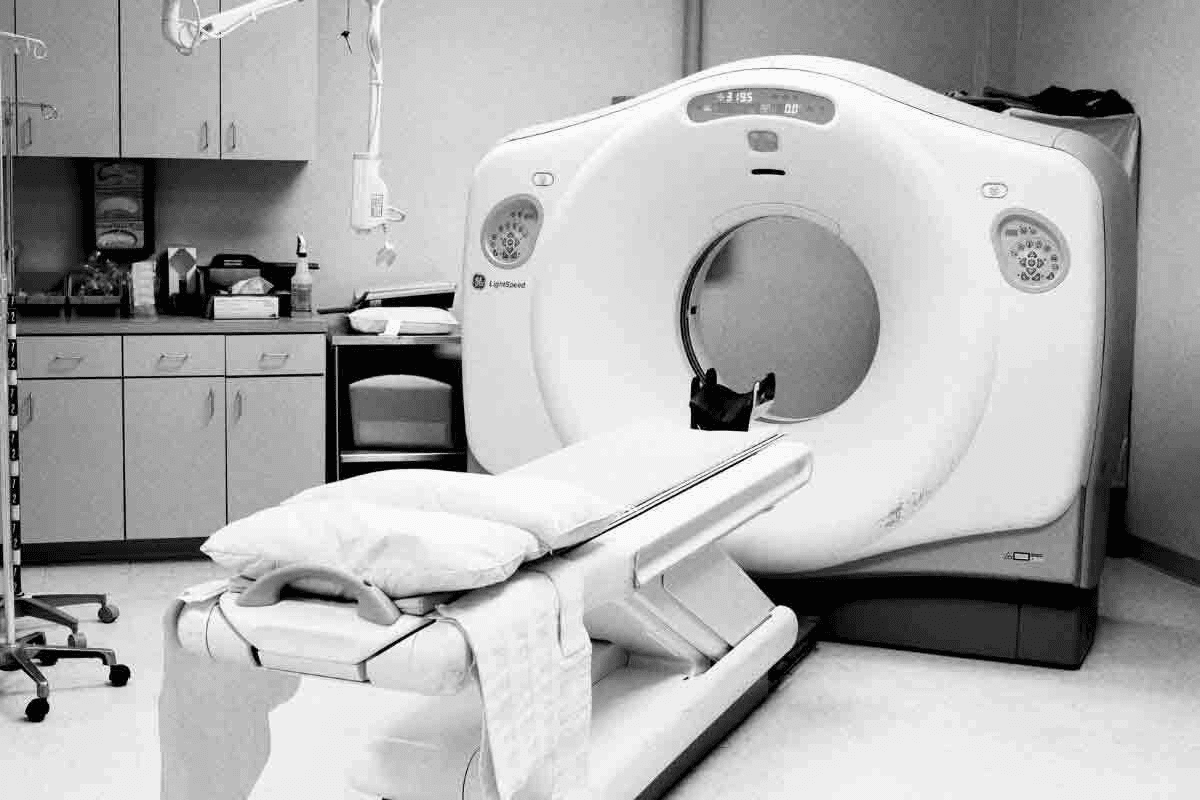Last Updated on November 27, 2025 by Bilal Hasdemir
Understanding Ovarian Cancer Types and Their Severity. Ovarian cancer is a complex and often misunderstood disease. It affects thousands of women worldwide each year. A startling fact is that ovarian cancer is the fifth leading cause of cancer deaths among women. This is mainly because it often has no symptoms in its early stages. Also, there are no good screening methods.
We know how important it is to understand the different types of ovarian cancer and how serious they are. The severity of ovarian cancer varies a lot among its types. This directly affects the ovarian cancer prognosis and survival rate.
By looking into the details of ovarian cancer types and their traits, we want to help international patients. We aim to give them the knowledge they need to make good choices about their care.

Key Takeaways
- Ovarian cancer is a complex disease with various types and severity levels.
- Understanding the aggressiveness of ovarian cancer is key for effective treatment.
- The prognosis and survival rate vary a lot among different ovarian cancer types.
- Knowing about ovarian cancer types helps patients make informed decisions.
- Effective management of ovarian cancer needs a full understanding of its severity.
Understanding Ovarian Cancer: An Overview
It’s key to know about ovarian cancer early for better treatment. This disease has many types that start in the ovaries. We’ll look into all parts of ovarian cancer to help you understand it well.
Definition and Basic Pathology
Ovarian cancer happens when cells in the ovaries grow out of control. Most cases start in the outer layer of the ovary. There are also germ cell ovarian cancer and stromal ovarian cancer, which start in egg-producing cells and connective tissue, respectively.
Doctors look at the type, grade, and stage of the tumor to understand the cancer. Knowing this helps them predict how the cancer will progress and choose the best treatment.
Prevalence and Demographics in the United States
Ovarian cancer is the fifth leading cause of death in women in the U.S., says the American Cancer Society. It’s more common in women over 60. The disease affects different ethnic and racial groups differently.
Knowing how common ovarian cancer is and who it affects helps in public health efforts. It also helps in raising awareness and improving care for those with the disease.
Classification of Ovarian Cancer Types
Ovarian cancer is not just one disease. It’s a group of cancers with different types. These types are based on how the cancer cells look and their genetic makeup. Knowing these details helps doctors understand the cancer better and choose the best treatment.
Histological Classification
Histological classification sorts ovarian cancers by the cell type they start from. The main types are epithelial, germ cell, and sex cord-stromal tumors. Epithelial ovarian cancers make up about 90% of cases. They have subtypes like serous, mucinous, endometrioid, and clear cell carcinomas.
Serous carcinomas are split into high-grade and low-grade types. High-grade serous ovarian cancer grows fast and is very aggressive. Low-grade serous ovarian cancer grows slower and might have a better chance of survival.
Molecular Classification
Molecular classification looks at the genetic and molecular traits of ovarian cancers. This helps doctors choose the right treatment. For example, BRCA1 and BRCA2 mutations raise the risk of ovarian cancer and affect treatment plans.
“The integration of molecular characteristics into the classification of ovarian cancer has revolutionized our approach to diagnosis and treatment, enabling more precise and effective care.”
Now, we can classify ovarian cancers more accurately. We consider both how the cells look and their genetic makeup. This detailed approach helps us understand the disease better. It also leads to more targeted treatments, which can improve patient outcomes.
Serious Ovarian Cancer Type: High-Grade Serous Carcinoma
High-grade serous carcinoma is a severe type of ovarian cancer. It is known for its poor prognosis. This type is responsible for most ovarian cancer deaths, making it a key area for research and treatment.
Pathological Features
High-grade serous carcinoma shows aggressive features. It has high-grade nuclear atypia and high mitotic activity. It also often has necrosis.
The tumor cells are serious in nature. Sometimes, psammoma bodies are seen, but this is more common in low-grade serous carcinomas.
This cancer type spreads quickly. It can reach the peritoneal surfaces and other pelvic areas early in the disease.
Genetic Characteristics
Genetically, high-grade serous carcinomas have TP53 mutations in almost all cases. These mutations make the tumor aggressive and resistant to treatments. Other genetic changes, like BRCA1 and BRCA2 mutations, are also common. They affect treatment options and genetic counseling.
- TP53 mutations: Present in nearly all high-grade serous carcinomas, contributing to their aggressiveness.
- BRCA1 and BRCA2 mutations: Common in high-grade serous ovarian cancer, impacting treatment and genetic counseling.
Why It’s Considered Most Aggressive
High-grade serous carcinoma is the most aggressive ovarian cancer subtype. It grows fast, spreads early, and is resistant to chemotherapy. Its poor prognosis is due to late diagnosis and its aggressive nature.
Understanding this cancer’s molecular and genetic basis is key to better treatments. Research into targeted therapies and immunotherapies holds hope for better survival rates and quality of life for patients.
Low-Grade Serous Ovarian Cancer
Low-grade serous ovarian cancer is a unique type of ovarian cancer. It has its own set of characteristics that differ from high-grade serous carcinoma. This makes it stand out in terms of pathology and how it behaves clinically.
Distinguishing Features from High-Grade
Low-grade serous ovarian cancer grows slowly and has a distinct molecular profile. The tumor cells have a more stable genome with fewer genetic mutations. This stability affects how the cancer presents and responds to treatment.
Experts say, “The difference between low-grade and high-grade serous ovarian cancer is not just in pathology. It also affects patient management and prognosis.”
“The low-grade type often presents at an earlier stage and has a more indolent course, whereas high-grade serous ovarian cancer is typically diagnosed at a more advanced stage and has a more aggressive clinical behavior.”
Prognosis and Treatment Response
The prognosis for low-grade serous ovarian cancer is generally more favorable. This is because the tumor grows slowly and may respond to certain therapies.
Low-grade serous ovarian cancer is less responsive to conventional chemotherapy than high-grade serous ovarian cancer. But, it may benefit from targeted therapies that target specific molecular vulnerabilities. The survival rate for patients with low-grade serous ovarian cancer is generally higher, showing its more indolent nature.
Understanding low-grade serous ovarian cancer is key to improving treatment strategies and patient outcomes. As research continues, we can expect more effective and personalized treatments for this disease.
Other Epithelial Ovarian Cancer Types
There are other types of epithelial ovarian cancers like mucinous, endometrioid, and clear cell carcinomas. Each type has its own challenges in diagnosis and treatment. They are important because they have unique features and need special care.
Mucinous Carcinoma
Mucinous carcinoma is a rare type of ovarian cancer. It is known for cells that make mucin. It’s hard to tell apart from tumors that started in other parts of the body, like the stomach.
Surgery and sometimes chemotherapy are used to treat it. The outcome depends on how advanced the cancer is.
Endometrioid Carcinoma
Endometrioid carcinoma looks like endometrial cancer. It’s linked to endometriosis. Treatment may include surgery and sometimes more therapy after.
People with this type of cancer usually do well if caught early.
Clear Cell Carcinoma
Clear cell carcinoma is a fast-growing type of ovarian cancer. It doesn’t respond well to common treatments. It’s often found when it’s already spread, which makes it harder to treat.
New treatments, like targeted therapies, are being explored. Better surgery techniques are also being developed.
In summary, knowing about these less common types of ovarian cancer is key to better care. We stress the need for accurate diagnosis and treatment plans tailored to each patient.
Non-Epithelial Ovarian Cancers
Non-epithelial ovarian cancers are a special group of ovarian cancers. They are different from the more common epithelial types. These cancers, like germ cell tumors and sex cord-stromal tumors, have their own challenges in diagnosis and treatment.
Germ Cell Tumors
Germ cell tumors come from the cells that make eggs in the ovaries. They are more common in young women and children. These tumors can be benign or malignant, with dysgerminoma being the most common type.
“Germ cell tumors are often diagnosed early because of symptoms like abdominal pain or a mass,” says a leading oncologist. Treatment usually involves surgery, and sometimes chemotherapy.
- Dysgerminoma: The most common type, often presenting in stage I.
- Yolk sac tumor: Highly malignant and often associated with elevated AFP levels.
- Teratoma: Can be benign or malignant, with the malignant form being rare.
Sex Cord-Stromal Tumors
Sex cord-stromal tumors come from the stromal part of the ovary. This includes the sex cords and stromal cells. These tumors can make hormones, causing various symptoms.
Granulosa cell tumors are a notable subtype. They often cause symptoms related to estrogen, like endometrial hyperplasia or cancer. Treatment includes surgery, and sometimes chemotherapy or hormonal treatment.
| Tumor Type | Common Symptoms | Treatment Approach |
| Granulosa Cell Tumor | Abnormal vaginal bleeding, abdominal pain | Surgery, possibly chemotherapy |
| Sertoli-Leydig Cell Tumor | Virilization, abdominal mass | Surgery, sometimes chemotherapy |
It’s important to understand non-epithelial ovarian cancers well. They are less common than epithelial types but need a special approach. Their unique characteristics make diagnosis and treatment planning critical.
Rare Ovarian Cancer Subtypes
Rare ovarian cancer types, like small cell carcinoma and primary peritoneal cancer, are tough to treat. They are less common but pose big challenges in diagnosis and treatment. This is because of their unique features and how they behave clinically.
Small Cell Carcinoma
Small cell carcinoma of the ovary is rare and very aggressive. It mainly affects young women. It grows fast and has a poor outlook.
- Aggressive Nature: This cancer grows quickly and spreads early.
- Diagnostic Challenges: It’s hard to diagnose because it looks like other ovarian cancers.
- Treatment Approaches: Treatment includes surgery, chemotherapy, and radiation.
Primary Peritoneal Cancer
Primary peritoneal cancer starts in the peritoneum, the lining of the belly. It’s similar to ovarian cancer but is rare. It has its own clinical and pathological traits.
- It’s often found late because its symptoms are not clear.
- Treatment is like for ovarian cancer, focusing on surgery and chemotherapy.
- How well a patient does depends on the cancer’s stage and treatment success.
It’s key to understand these rare cancers to find better treatments. Research is ongoing to find new ways to fight these cancers.
We’re dedicated to caring for patients with these rare cancers. Our team creates personalized plans to meet each patient’s needs.
Comparing Aggressiveness: What Makes Some Types More Serious
It’s key to know how aggressive ovarian cancer is to create good treatment plans. The severity of ovarian cancer types changes based on growth speed, how it invades tissues, and how likely it is to spread.
Growth Rate and Invasion Patterns
The speed at which ovarian cancer cells grow and how they spread into nearby tissues is very important. High-grade serous carcinoma grows fast and spreads a lot, making it very aggressive.
Each type of ovarian cancer grows differently. For example, low-grade serous ovarian cancer grows slower than high-grade serous carcinoma. Knowing these differences helps doctors predict how the disease will progress and plan the best treatments.
Metastatic Potential
The ability of ovarian cancer cells to spread to other parts of the body is another key factor. Cancers that spread easily are harder to treat and have a worse outlook.
We’ve made a table to show how different ovarian cancer types spread and grow:
| Ovarian Cancer Type | Growth Rate | Metastatic Potentia |
| High-Grade Serous Carcinoma | Rapid | High |
| Low-Grade Serous Ovarian Cancer | Slow | Moderate |
| Mucinous Carcinoma | Variable | Low to Moderate |
By looking at these differences, we can see why some ovarian cancers are more serious. This helps doctors create treatments that fit each patient’s needs, leading to better results.
Staging and Its Impact on Severity
The staging of ovarian cancer is key in understanding its severity and outlook. It helps doctors see how far the disease has spread. This is important for choosing the right treatment and predicting how well a patient will do.
The FIGO Staging System
The International Federation of Gynecology and Obstetrics (FIGO) staging system is widely used. It classifies ovarian cancer from I to IV, with higher numbers meaning more advanced disease. The system looks at tumor size, lymph node involvement, and distant metastasis.
Stage I means the cancer is only in the ovaries. Stage II involves the ovaries and other pelvic structures. Stage III shows the cancer has spread to the abdominal cavity or lymph nodes. Stage IV indicates distant metastasis beyond the abdominal cavity.
Impact on Prognosis Across Types
The stage at diagnosis greatly affects ovarian cancer prognosis, regardless of type. Generally, earlier stages (I and II) have a better prognosis than advanced stages (III and IV).
The five-year survival rate changes a lot with the stage. Patients diagnosed early have a much higher survival rate than those diagnosed later. Knowing the stage helps in making informed treatment decisions.
For example, patients with Stage I ovarian cancer may have a survival rate over 90%. Those diagnosed at Stage III or IV have a much lower survival rate, often below 50%. This depends on factors like the specific histological type and treatment response.
Recent Advancements in Ovarian Cancer Research
New discoveries in ovarian cancer research are leading to better treatments. We’re seeing big changes in how we diagnose and treat ovarian cancer. This is all thanks to advances in genetic testing, personalized medicine, and new treatments.
Genetic Testing and Personalized Medicine
Genetic testing is key in managing ovarian cancer. It helps find specific genetic mutations, like BRCA1 and BRCA2. This lets doctors create treatment plans that really work for each person. Personalized medicine uses this genetic info to pick the best treatments.
Benefits of Genetic Testing:
- Identifies high-risk individuals for preventive measures
- Guides targeted therapy decisions
- Enhances family screening for hereditary cancers
Emerging Treatments and Clinical Trials
New treatments like immunotherapy and targeted therapy are being tested in clinical trials. These new methods aim to increase survival rates and improve life quality for ovarian cancer patients.
| Treatment Type | Description | Potential Benefits |
| Immunotherapy | Boosts the body’s immune system to fight cancer | Enhanced anti-tumor response, fewer side effects |
| Targeted Therapy | Targets specific cancer cells, minimizing damage to healthy cells | More precise treatment, reduced toxicity |
Clinical trials are vital for checking if new treatments are safe and work well. We’re dedicated to joining and supporting these trials to help find better treatments for ovarian cancer.
By leading in ovarian cancer research, we can keep making treatments better. The future looks bright, with ongoing research and new treatments giving us hope.
Conclusion: Understanding the Spectrum of Ovarian Cancer Severity
It’s key to understand the range of ovarian cancer severity for better treatment. Ovarian cancer comes in many types, each with its own traits and genetic makeup. These factors affect how well a patient can be treated and their chances of survival.
We’ve looked at the different types of ovarian cancer. These include high-grade serous carcinoma and low-grade serous ovarian cancer. There are also other types of epithelial and non-epithelial ovarian cancers. Getting the right diagnosis and treatment plan is vital for better results.
Research in genetic testing and personalized medicine is making progress. New treatments and clinical trials are also on the horizon. By learning more about ovarian cancer, we can offer better care to patients from around the world.
FAQ
What are the main types of ovarian cancer?
Ovarian cancer comes in three main types. Epithelial ovarian cancer is the most common, making up about 90% of cases. The other types are germ cell ovarian cancer and stromal ovarian cancer.
What is high-grade serous ovarian cancer?
High-grade serous ovarian cancer is a serious and aggressive form. It grows fast and spreads quickly. It’s the most aggressive type of ovarian cancer.
How does low-grade serous ovarian cancer differ from high-grade serous ovarian cancer?
Low-grade serous ovarian cancer is less aggressive than high-grade. It grows slower and is less likely to spread. This makes it a less serious type of cancer.
What are the other types of epithelial ovarian cancer?
Epithelial ovarian cancer also includes mucinous carcinoma, endometrioid carcinoma, and clear cell carcinoma. Each type has its own characteristics and treatment options.
What is the FIGO staging system, and how does it impact ovarian cancer prognosis?
The FIGO staging system helps determine how far ovarian cancer has spread. The stage at diagnosis greatly affects treatment success and survival chances.
How does genetic testing impact ovarian cancer treatment?
Genetic testing can find specific genetic mutations in ovarian cancer. This info helps tailor treatments, improving outcomes.
What are the latest advancements in ovarian cancer research?
New research brings personalized medicine and treatments like targeted therapies and immunotherapies. Clinical trials are testing these new options.
What is the prognosis for ovarian cancer patients?
Ovarian cancer prognosis varies by type and stage at diagnosis. Early detection and accurate diagnosis are key to better outcomes.
How does ovarian cancer aggressiveness impact treatment outcomes?
Aggressive ovarian cancer needs more intense treatment. Knowing how aggressive a cancer is helps plan effective treatment.
What is primary peritoneal cancer, and how is it related to ovarian cancer?
Primary peritoneal cancer is rare and similar to ovarian cancer. It starts in the abdomen’s lining, not the ovaries, and is treated like ovarian cancer.
What are the treatment options for rare ovarian cancer subtypes?
Rare ovarian cancer subtypes like small cell carcinoma have limited treatments. New treatments and trials offer hope for these patients.






